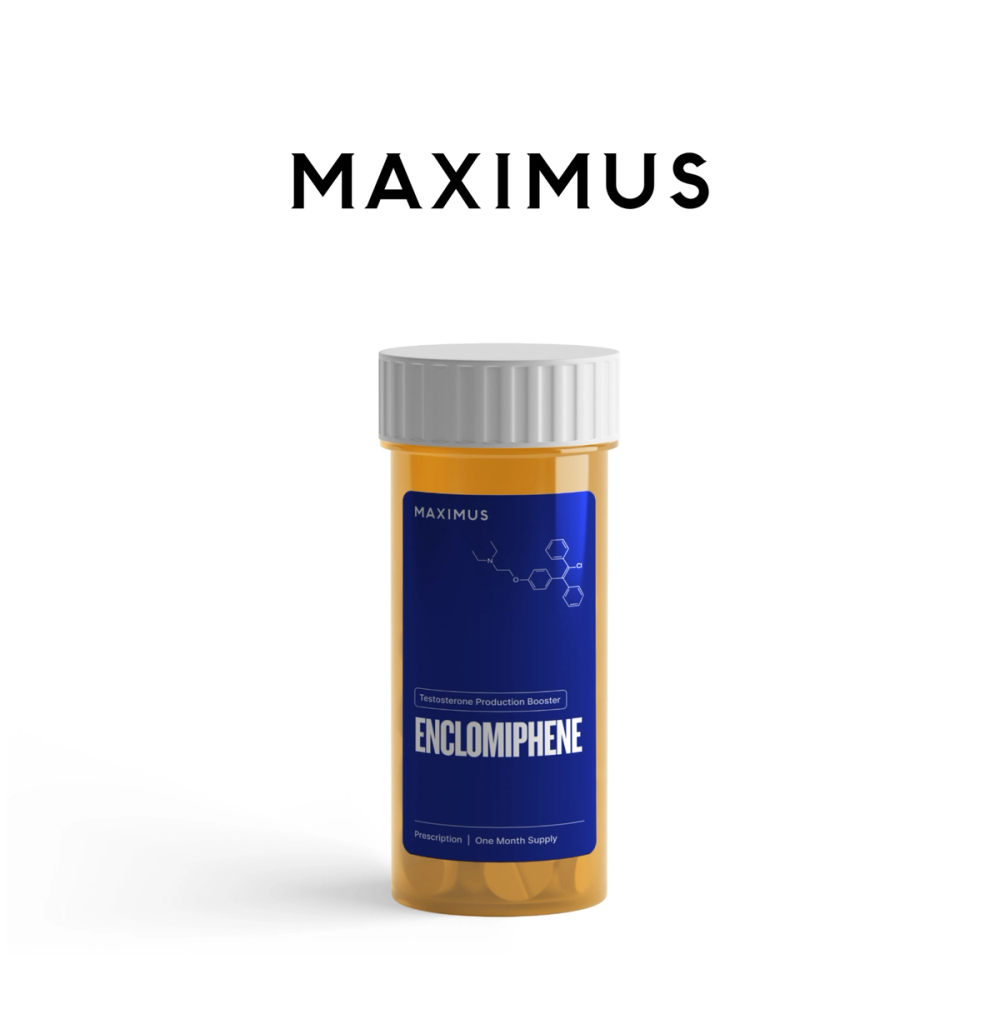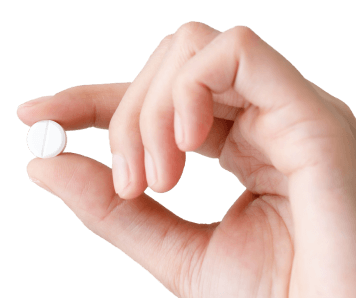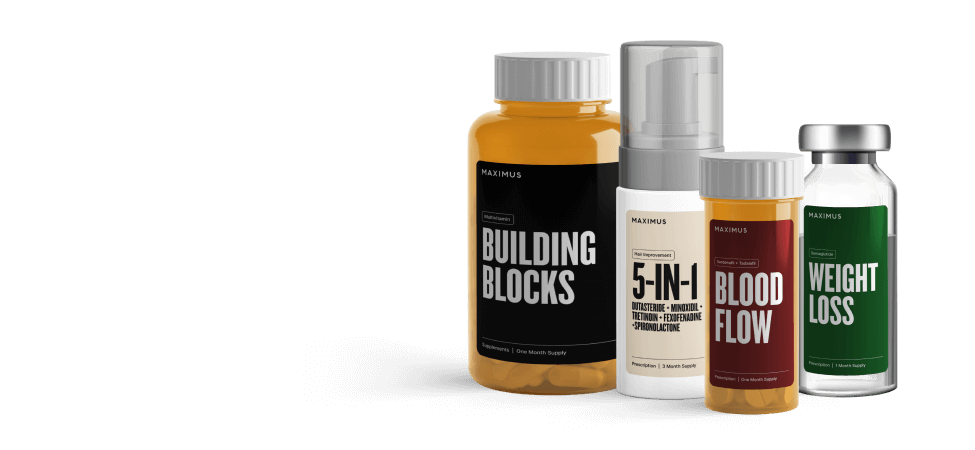Key Takeaways
- Testosterone replacement therapy (TRT) is available in multiple forms, including oral pills, injections, topical gels, creams, and nasal sprays. Each has different benefits and drawbacks, depending on various factors.
- While many forms of TRT can negatively affect fertility, some newer options, like Maximus Oral TRT+ offer a more fertility-friendly alternative.
- Each form of TRT comes with specific side effects and risks. Before taking TRT, it’s extremely important to consult with a doctor to find the right therapy and learn about any potential side effects.
Have you started to notice that your energy is lagging or your sex drive is a bit sluggish? Maybe you’re feeling a little heavier since the last time you stepped on a scale? These symptoms can arise for many reasons, including if your testosterone production is slowing down. Many men experience a 1 to 2% drop in testosterone levels each year after hitting their 30s and 40s, but you can experience symptoms of low testosterone at any time. In many cases, testosterone replacement therapy, or TRT, can help.
Whether you’ve been diagnosed with hypogonadism or are experiencing symptoms of low testosterone, like low libido, fewer spontaneous erections, sexual dysfunction, shrinking testes, and patchy or sparse beard hair growth, TRT may be an option for you. When you’re on TRT, you may see improvements in libido, erectile function, sexual satisfaction, energy levels, muscle mass, memory, concentration, and more.
If you’re interested in testosterone replacement therapy, you’ll want to speak with a doctor to learn more about whether it’s right for you. Keep reading to learn more about the different forms of TRT, including how each works and what to expect.
What are the different types of testosterone replacement therapy?
Many different kinds of TRT are available in the U.S. today, such as oral TRT, TRT injections, transdermal gels, creams, and more. Here’s some more information on each:
Oral TRT
Oral TRT is a prescription medication that is prescribed to treat the symptoms of hypogonadism, or low testosterone. Research shows that some forms of oral testosterone are among the least suppressive forms of TRT. In fact, some forms of oral testosterone maintain LH and FSH (which are markers of fertility) within normal limits, despite a decrease from baseline, research shows, with the researchers suggesting that this could result in less suppression of spermatogenesis. Other forms have maintained FSH and LH within range for 40% and 41% of men, respectively.
Oral TRT pills are often taken daily with a high-fat meal, which can significantly improve how the medication is absorbed. Some oral testosterone formulations may rely less on pathways commonly associated with first-pass liver metabolism, though the extent of these effects is still being evaluated.
The Maximus Oral TRT+ Protocol contains native (base) testosterone and enclomiphene. Combining oral testosterone with enclomiphene may help maintain fertility markers and support testicular function while still providing the benefits of supplemental testosterone.
Potential side effects and safety considerations:
Earlier forms of oral TRT were discontinued due to concerns about liver damage. Current oral testosterone approaches use different delivery methods, and our ongoing monitoring of key health markers, including liver enzymes, has not indicated changes typically associated with liver stress.
TRT injections
For a long time, testosterone injections were seen as the gold standard treatment for low testosterone.
These intramuscular testosterone injections are typically done once or twice weekly, often beginning with 50-100 mg doses. After taking TRT injections, subjects in studies noticed increases in muscle mass, decreased fat, as well as improved sexual function.
With testosterone injections, testosterone levels stay elevated for long periods of time and then slowly decrease before the next injection. This is different than the natural increase of testosterone production early in the day, peaking around 10 am to 12 pm, and then slowly decreasing by the time you head to sleep.
Potential side effects and safety concerns:
Some injectable testosterone therapies have been associated with libido, energy, and mood fluctuations. Other potential side effects include swelling and muscle scarring at the injection site, and allergic reactions. Additionally, research shows that long-term testosterone injections can have a negative impact on fertility and sperm quality.
Topical TRT gels and creams
Testosterone gels and creams are a common form of TRT prescribed to help men maintain serum testosterone concentrations, whether to treat symptoms of low testosterone or diagnosed hypogonadism. When you apply testosterone gels to your skin�’s surface, the product is absorbed through your skin, where it then enters the bloodstream to help your body increase your testosterone levels. These products come in many forms and should be applied as directed. Most commonly, they’re applied at least once per day to clean, dry, thick skin on places like the upper arms and shoulders, and sometimes on the scrotal region. Each brand has different instructions, so you’ll want to follow your doctor’s recommendations for where to apply your testosterone gel.
Potential side effects and safety concerns:
One concern with TRT gels is that the medication can easily be transferred to someone else if it comes in contact with their skin. Some studies found that when men’s skin came in contact with their young children, the testosterone gel transferred to their children’s skin and led to early onset puberty. Now, testosterone gel products include warnings to avoid this potential health risk.
To avoid accidental transfer, It’s important to wash your hands before and after applying TRT gel and to wear clothing or wash the area where you applied the product before coming in contact with someone else’s skin.
Nasal testosterone replacement therapy
Nasal testosterone gels are used to treat the symptoms of low testosterone. You take this medication by spraying it into each nostril three times a day after swabbing your nose clean. It’s important not to blow your nose or sniff for an hour after spraying the medication into your nasal cavities.
Potential side effects and safety concerns:
Nasal testosterone gels carry side effects like a possible increased risk of nasal problems like a runny nose and congestion, cough, and sinus infections. Nasal testosterone gels can also interact with other medications, like other nasal sprays, diabetes medications, and steroids. So it’s important to tell your doctor about all the medications you take.
How to choose between the different forms of TRT
Chat with your doctor or a health professional at Maximus to learn more about whether testosterone replacement therapy is recommended for you and will help with your symptoms as well as your goals.
You can discuss the different forms of TRT with your physician, including the pros and cons of each, and they might make certain recommendations based on your health history, symptoms, lifestyle preferences, as well as specific concerns, like fertility.
Learn more about Maximus’ Testosterone Protocol and Oral TRT+ Protocol.
Disclaimer: The contents of this article, including, but not limited to, text, graphics, images, and other information, is for information purposes only and does not constitute medical advice. The information contained herein is not a substitute for and should never be relied upon for professional medical advice. The content is not meant to be complete or exhaustive or to be applicable to any specific individual's medical condition. You should consult a licensed healthcare professional before starting any health protocol and seek the advice of your physician or other medical professional if you have questions or concerns about a medical condition. Always talk to your doctor about the risks and benefits of any treatment. Never disregard or delay seeking professional medical advice or treatment because of something you have read on this site. Maximus does not recommend, endorse, or make any representation about the efficacy, appropriateness, or suitability of any specific test, products, procedures, treatments, services, opinions, healthcare providers or other information contained herein. Maximus is not responsible for, nor will they bear any liability for, the content provided herein or any actions or outcomes resulting from or related to its use.








